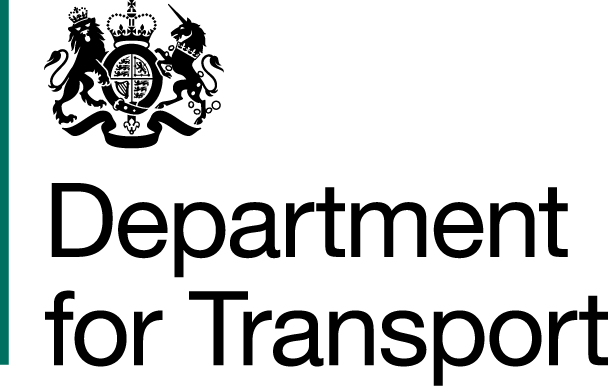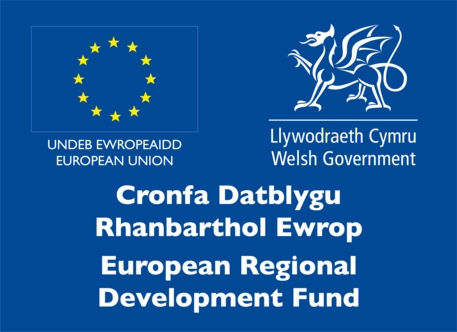
Social media guide
Social media is a great tool to increase take up of active travel. It can be used to demonstrate the benefits of cycling, walking and wheeling everyday journeys to a wide audience. You can use it to promote new infrastructure and local campaigns. Social media is a keyway to engage with people in your local area.
To help, we’ve put together these top tips for producing content.
Influence and understanding your role within the digital space
It is important to set out what your content is trying to achieve. Creating a content plan for your campaign and work in collaboration with the brand and marketing team is helpful.
Key areas to focus on would be:
- Key Messages
- Audience relevance
- Timing
- Objectives - what you want to achieve?
Focus on being clear and concise
Remember that social media is a customer service channel. Make posts clear and concise to capture people’s interest and avoid losing it.
Think about the audience on the social media channel and the time that people take to absorb digital messaging. It is often necessary to create several similar social media posts to engage with your audience fully due to dwell time.
Think about your audience
With almost 80% of the UK’s population on social media, targeting the right audience is key. You could be looking to target people based on age, location and interests.
Understand the demographics of the social media platform and ensure this fits with your target audience. You will be able to review this by looking at the insights on your social media platforms. Here, age and gender and location are key indicators.
Use hashtags which fit your niche to extend your reach. It’s worth including two to three hashtags per post - though avoid more than this as it can appear spammy. We recommend experimenting with generic, cycle and walking themed hashtags (for example, #cycling or #cyclists, #getactive #walking) as well as relevant location-specific hashtags (for example, #Swansea #Cardiff).
Tag relevant individuals and organisations in your posts as they may choose to share your content. If there is no space in the tweet itself due to character limit, you can tag up to ten accounts in an attached image. Try not to bombard other accounts with tags - do this sparingly when there is a shared connection.
Retain a loyal following by responding to comments and following back supporter accounts.
When looking at your social media insights, it’s best to tailor your posts for the audience you want to engage. For example, younger people are more likely to use Instagram or TikTok, while older people tend to prefer Facebook. If you want to reach professionals, consider LinkedIn and X. Threads has become an alternative to X. Consider BlueSky for alternative to X. For more details on targeting, we suggest you review the insights and performance of the individual platform.
Build an online community
Retweet relevant content from other people and organisations in your local community and area. Consider if a joint social media approach could be taken with partners working on active travel. This will maximise opportunities to deliver key messages to your target audience.
If you’re on Facebook, join relevant interest groups active in your local area and engage them in conversation with your campaign message. It usually works best when you do so via your personal profile, keeping it natural and avoiding a salesy approach.
Follow the accounts of relevant individuals and organisations, including local cycle clubs, walking groups, politicians and like-minded campaigners.
Jump on relevant conversations, especially those initiated by the accounts above or posts featuring relevant hashtags. Engage by liking, commenting and sharing posts.
Respond to comments
Respond to comments and direct messages to build a community. Tone of voice in this instance is important as you will be representing the social media face of the organisation.
Do not ignore criticism. Active travel can be a contentious issue so consider how you’ll respond to critics before posting content. Social media is a forum to address conflict and negative press. If you are clear and transparent in terms of response then this can work to your advantage. Addressing a issue raised by an individual solves their problem and others can see your proactive response. This will help build a positive opinion of the organisation.
Engagement by using the right content
The average person spends over two hours a day on social media. How do you stop them scrolling past your post? Here’s how to grab attention and boost engagement.
Post regularly to build a consistent online presence. On X, we recommend aiming for at least one post per day while on Facebook three times per week is a good target.
Consistency is key: being on topic and available shows to your followers that you are reliable.
Upload a high-quality image or short video with your post to support your message. Videos on X can be no longer than 2 minutes 20 seconds.
Make it really clear how people can act from a post and support your cause. If your campaign is ongoing, you could pin a strong post to the top of your profile so that it is the first people see when they view your account.
Strengthen your case by; including interesting statistics, highlighting real-life stories and examples, and sharing external news stories and articles use these tactics effectively.
Always maintain a constant tone of voice for this platform. It’s a good idea to engage with your brand and marketing team to establish this and refine over time in line with audience engagement.
Using an image with a post has been shown to increase engagement. Encourage people to share their own pictures and videos of their active travel journeys. User generated content can be powerful, showing that you have support within the audience. It can help reduce the perception of risk for people to take part in active travel, thereby increasing the instances of people engaging in the activity.
Loop into national and global events
Tie active travel promotion into national or local events. Advertising cycling to work week or walk to school month can help boost active travel in your area and your follower count. We have a list of active travel dates that you can tie your content to.
It’s sometimes worth creating a unique campaign hashtag as this allows you to create a movement and monitor engagement. Keep it simple and readable and reflect your message. A recent, successful example is #ThisMachineFightsClimateChange from Pedal on Parliament in Scotland ahead of COP26.
Things to consider before posting
Many factors determine whether a social media post will be successful, but there are also some standard rules to bear in mind. Here are some final things to consider:
- Always check over your post before publishing, paying attention to spelling, grammar, accuracy and tone.
- Be polite and professional. Campaigners need to stand up for what they believe and be firm.
- Keep it respectful and avoid getting into fights - once a post is out there, it’s out there forever.
- Keep it clear and concise. Ensure your copy is neat and easily readable, using line breaks and URL shorteners, avoiding caps lock and acronyms.
Schedule your content in advance can save you time
Scheduling your content ahead of time can save you time and speedily populate your feed. You can do this with the individual social media platform Meta, X and LinkedIn. You may want to invest in a scheduling tool which will support you review of the performance of your content too.
Remember the Welsh/ Cofiwch y Cymraeg
Remember that all public-facing media needs to be available in English and Welsh. At TfW, we adhere to the Welsh Language Standards (No. 1) Regulations 2015, where we lead with the Welsh language and followed by English (or if side by side, Welsh on the left and English on the right). We’ve produced some phrases in English and Welsh you might want to use as a starting point.
Follow accessibility guidelines
Use inclusive language and image descriptions to ensure that as many people as possible can engage with your content.
Speak with your communications and branding teams
They can offer you advice on what works locally and how to apply the correct branding. They can also help you tie into other local campaigns. It is also essential to align messaging with the branding and marketing team to ensure that what you are communicating works with the other key messaging coming from the organisation. This helps to avoid confusion and strengthens the important messages of the organisation. Different information from different parts of the organisation may undermine your integrity.
In a crowded field, it’s important to stand out in people’s feeds. Take these tips as suggestions rather than hard and fast rules. Be creative: people can value originality and authenticity on social media. Using existing campaigns and topics from the organisation as a basis for your messaging could benefit the whole organisation.
Evaluate what works (and what does not…)
Online analytic tools can help you measure how many people see and engage with your posts. This can allow you to tweak content and meet overlooked needs to gain a wider audience. You can also access this information from the insight section of the individual platforms. This shows you what key messages and content work for your audience and who your outstanding advocates are.
Final word on using social media
When using social media, we suggest community members to follow some simple guidelines in order to keep things friendly:
- Be polite, courteous and respectful of others.
- Do not post content that is discriminatory, racist, obscene, inflammatory, harassing, hateful, threatening, profane or personally abusive.
- If telling a story about someone else, ask yourself first ‘Is this my story to tell?’ Don’t reveal personal details about others without their explicit permission.
- Do not post adverts for commercial products or services.
- Do not mislead people about who you are or use pseudonyms.
- Do not add comments to a social media post that are irrelevant to the topic. Engage in the conversation rather than broadcasting opinions.
- Don’t share in haste. Read linked content thoroughly or watch a video to the end so you know exactly what you are sharing, before you judge whether it is suitable to share.
- It's also important to not share material that belongs to someone else and isn't available for you to use due to copyright. Make sure you always seek the copyright holder's permission before sharing or using content, if it hasn't already been given.
- Do not post anything that could be libellous or defamatory.



